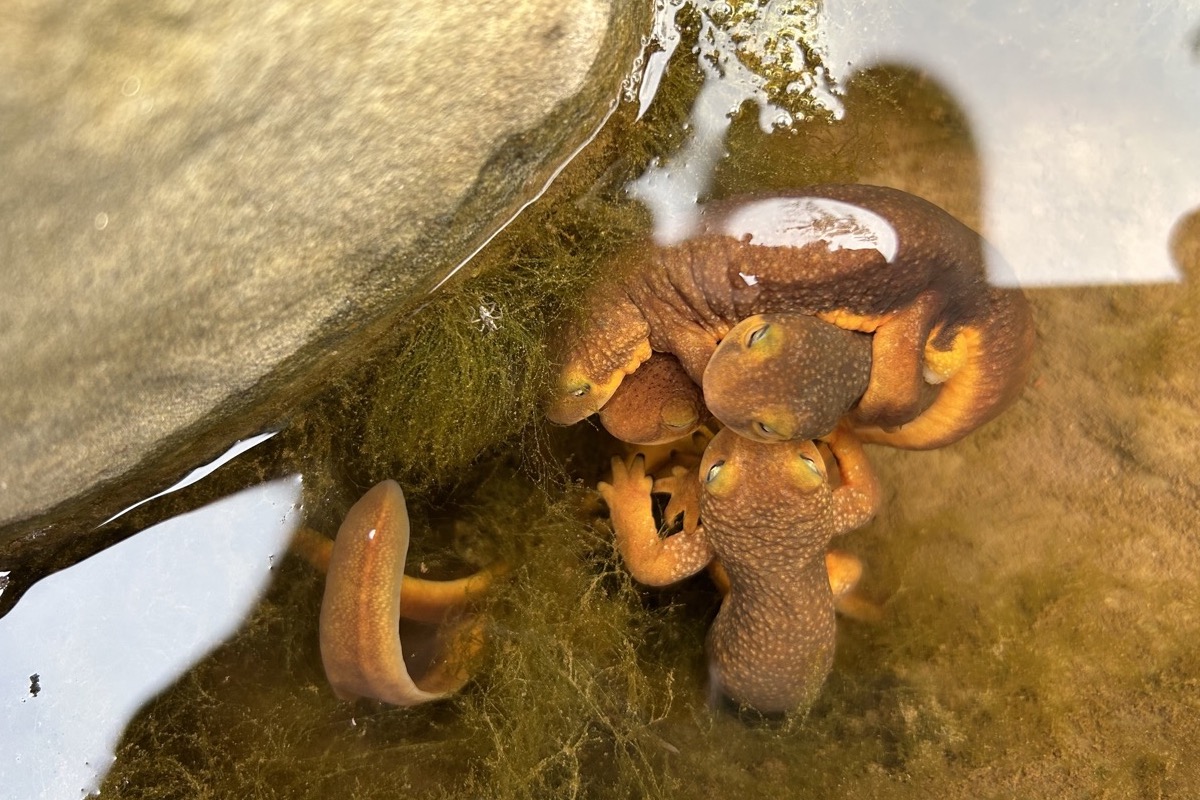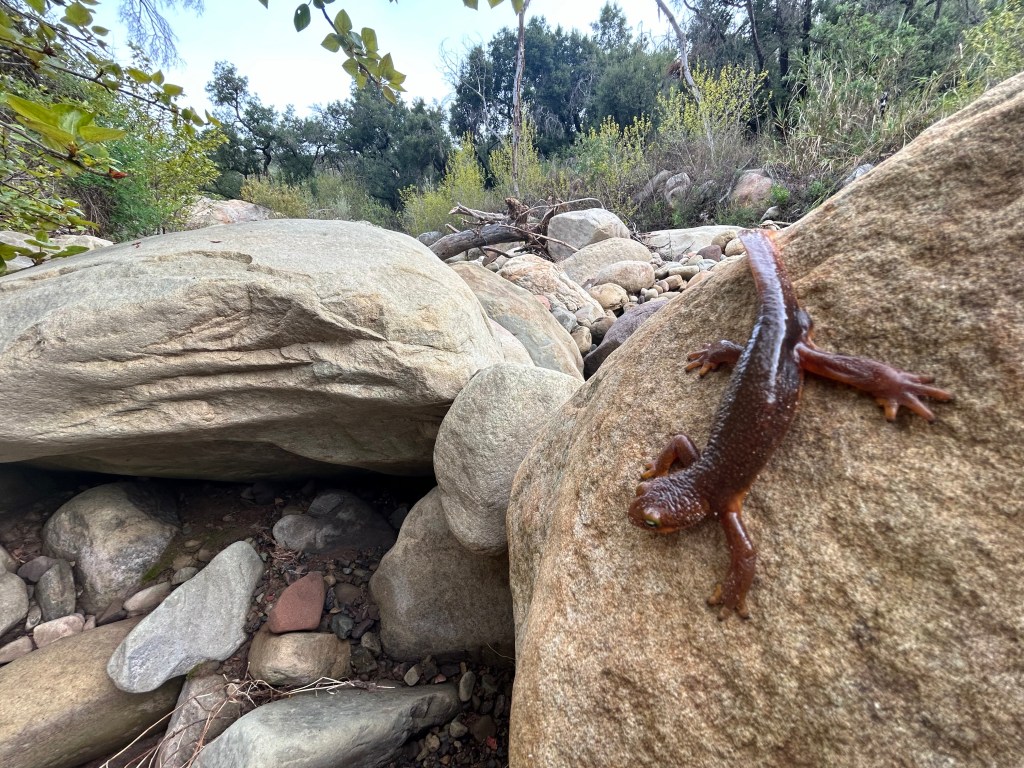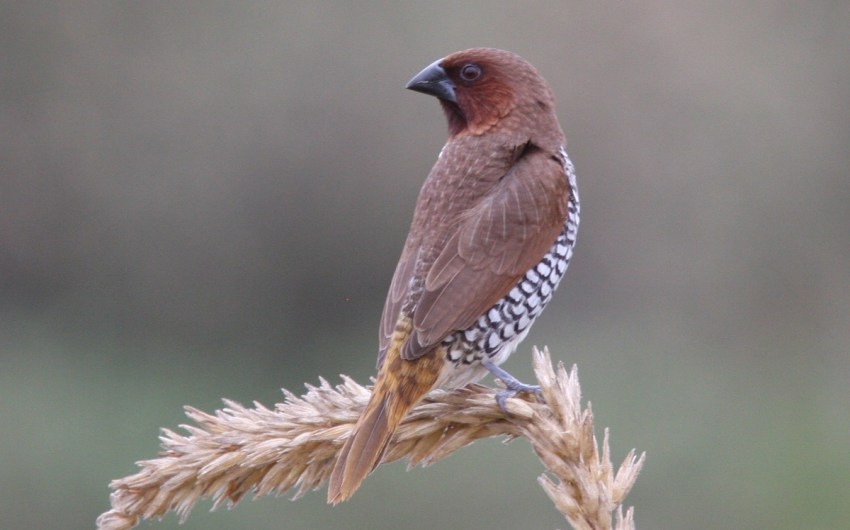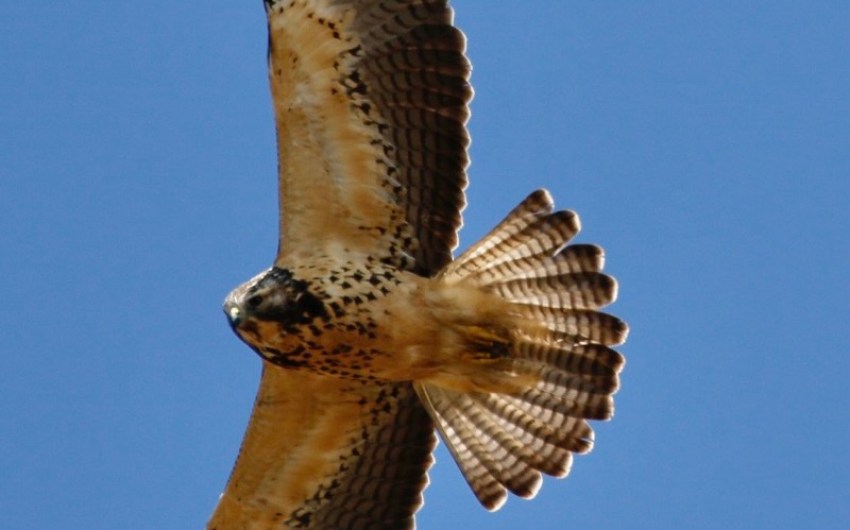Newtified
What’s Newt? Our Expert Outdoorsman Expounds on These Santa Barbara Creek Dwellers

The cascading stream possessed a steady flow, gushing between two burly sandstone boulders. The seasonal creek has been fed by back-to-back wet winters, much-needed rain soaking Santa Barbara’s front-country range.
Within the creek there was a rough-skinned amphibious pulse frolicking in its gurgling ebb and flow. It was the right volume of hydrology for California newts (taricha torosa) to prosper in.
The Santa Ynez Mountains, an east-to-west range of coastal chaparral and gritty sandstone slabs, is home to a throng of species large and small. Still, the California newt springs to life only during wet winters within the coastal range.
Those front-country creeks are also popular, attracting throngs of hikers, backpackers, trail runners, and mountain bikers. The soothing sound of a rushing runnel is difficult to ignore as spring melds into summer.
Orange Crush
Also known as the orange-bellied newt, California newts are endemic to coastal counties and the Sierra Mountains. They are related to salamanders, but their skin is rougher. And with the way they slowly move, gradually clambering over cobble-strewn creeks, they seem susceptible to predation, or possibly an unaware hiker.
Maybe they know they are well-equipped to fend off most predators, so they seemingly take their time climbing over rocks. California newts possess the potent neurotoxin tetrodotoxin. It’s 100 times more toxic than cyanide. It’s strong enough to ward off most vertebrates, including us humans.
Because of this, they have few predators. Two-striped garter snakes are the one species capable of preying on newts. They’ve developed some sort of genetic resistance to the newt’s toxin.
Also, as they move across their aquatic habitat, they seem completely silent, or maybe “mute newts.” Instead, they actually communicate with each other through a series of clicks, squeaks, and whistles that only they can appreciate.
Looking Ahead
However, tread lightly. There are many inhabitants within those creeks requiring the right amount of moisture and flow, creeks that meander all the way to the ocean realm for their survival. Those creeks and their side pools are vital habitats for California newts.

On a recent hike, I counted 44 newts in a section of a creek that stretched for 50 yards. Newts were abundant, out of the water, and traveling across the cobble. They were even moving across trails and swimming upstream with ease. Side pools were busy with balled up newts rolling and mating in the calm clear shallows. They attach their eggs to rocky crevices, floating rafts of fallen leaves, and plant roots. Newts mate from December to early May. And amazingly, if the adults survive, they return to the same pools they originally hatched from.
As I continued counting newts, it was apparent I needed to move slowly. The last thing I wanted was to step on a newt, or possibly step on a rock that moved or even collapsed into a side pool, thus upsetting mating newts. I constantly kept my head up, looking ahead for traveling newts, that brilliant orange standing out on the cobble.
At times, I just sat and observed their activity. They looked like they moved slowly, but before I knew it, they covered a lot of ground while utilizing their tails to counterbalance and assist them while climbing over rocks.
California Department of Fish and Wildlife has listed California newts as a Special Concern species. Overall, California newts are doing relatively well, but like other endemic species, they are vulnerable to invasive predators such as mosquitofish and red swamp crayfish.
Their other threat is us. They just need the right of way on the trail, and within their flowing coastal aquatic biome.














You must be logged in to post a comment.